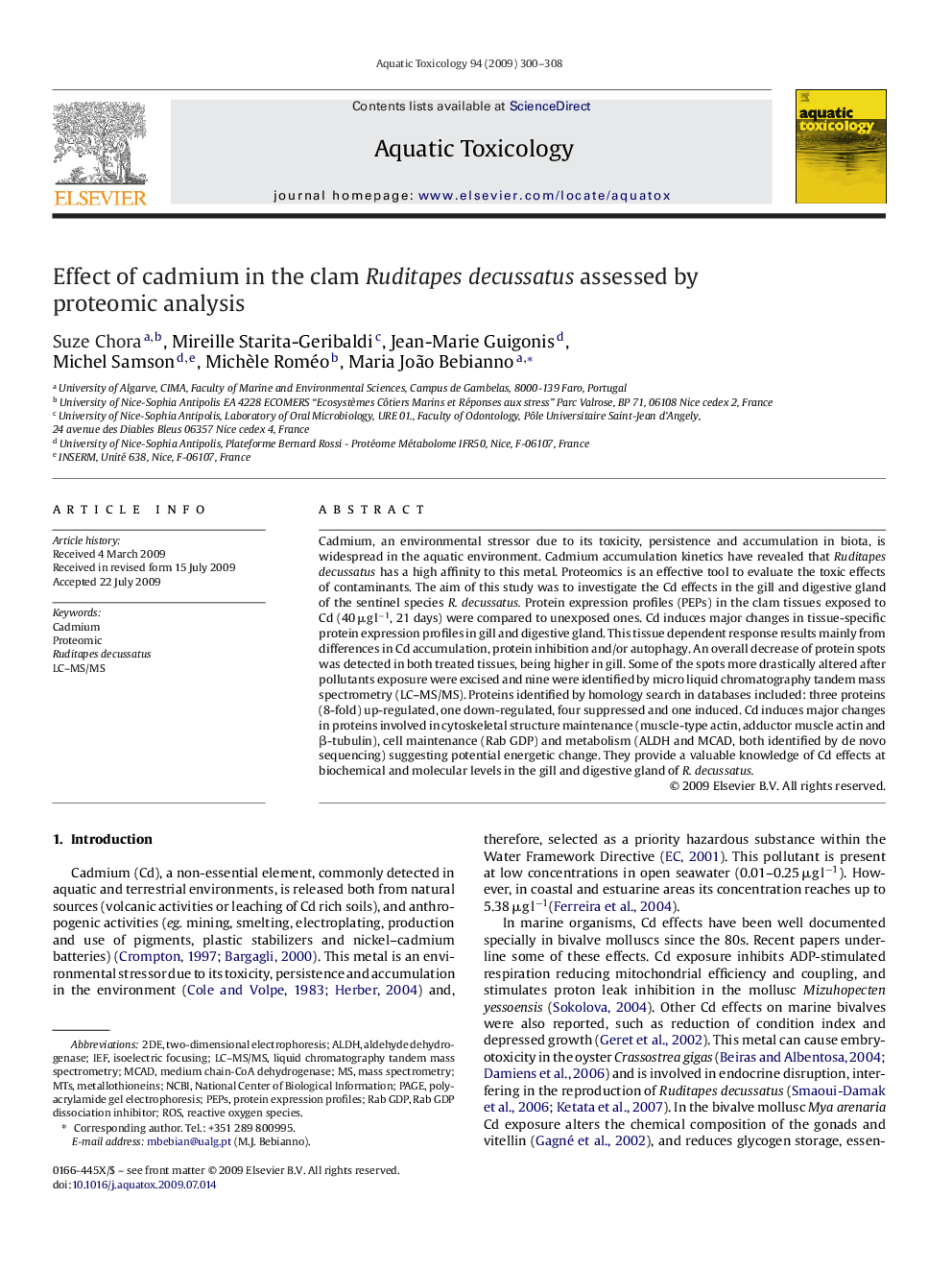| Article ID | Journal | Published Year | Pages | File Type |
|---|---|---|---|---|
| 4530603 | Aquatic Toxicology | 2009 | 9 Pages |
Cadmium, an environmental stressor due to its toxicity, persistence and accumulation in biota, is widespread in the aquatic environment. Cadmium accumulation kinetics have revealed that Ruditapes decussatus has a high affinity to this metal. Proteomics is an effective tool to evaluate the toxic effects of contaminants. The aim of this study was to investigate the Cd effects in the gill and digestive gland of the sentinel species R. decussatus. Protein expression profiles (PEPs) in the clam tissues exposed to Cd (40 μg l−1, 21 days) were compared to unexposed ones. Cd induces major changes in tissue-specific protein expression profiles in gill and digestive gland. This tissue dependent response results mainly from differences in Cd accumulation, protein inhibition and/or autophagy. An overall decrease of protein spots was detected in both treated tissues, being higher in gill. Some of the spots more drastically altered after pollutants exposure were excised and nine were identified by micro liquid chromatography tandem mass spectrometry (LC–MS/MS). Proteins identified by homology search in databases included: three proteins (8-fold) up-regulated, one down-regulated, four suppressed and one induced. Cd induces major changes in proteins involved in cytoskeletal structure maintenance (muscle-type actin, adductor muscle actin and β-tubulin), cell maintenance (Rab GDP) and metabolism (ALDH and MCAD, both identified by de novo sequencing) suggesting potential energetic change. They provide a valuable knowledge of Cd effects at biochemical and molecular levels in the gill and digestive gland of R. decussatus.
